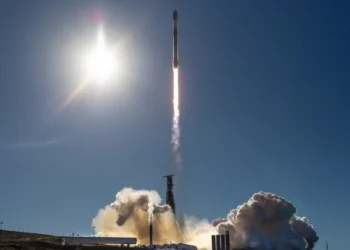Clapping is something we all do — at concerts, performances, celebrations, or simply to get someone’s attention. It’s such a routine part of our lives that we rarely stop to wonder: why does clapping make a specific sound? Why does slapping our hands together create such a sharp, distinct noise?
Understanding the physics and biology behind clapping can offer insight into the mechanics of sound, human behavior, and even acoustics. Let’s break it down step-by-step.
The Mechanics of Clapping: What Happens When You Bring Your Hands Together?
Clapping occurs when you quickly bring your two hands together with some force. On the surface, it seems simple — but in reality, there are several scientific principles at play that combine to produce that characteristic sound.
1. Hand Contact and Kinetic Energy
At its core, clapping is about energy transfer. When your hands come together, kinetic energy (the energy of motion) is transferred from your moving hands into the surrounding air. The palms compress the air trapped between them, creating a mini pressure explosion.
This sudden contact generates a rapid spike in air pressure. That pressurized air is then expelled outward at high speed, producing a burst of sound — the “clap” we hear.
Understanding Sound: How Does Air Create Audible Vibrations?
Sound is, in essence, vibrations traveling through a medium, typically air. When you clap your hands, you create an acoustic wave — a pressure wave that travels through the air and reaches our ears.
2. Air Pressure and Release
The space between your hands traps air. As your palms slap together, the air is squeezed rapidly, increasing pressure. This creates what physicists call a pressure wave — a form of energy that moves outward in all directions from the source.
When the compressed air is released, it causes the surrounding air particles to vibrate. These vibrations then travel through the air in waves, which are detected by our eardrums and interpreted by our brains as the sound of a clap.
Why Every Clap Sounds Different
If you’ve ever noticed that some claps are sharp and loud, while others are softer or more muffled, that’s because several factors influence the sound produced.
3. Hand Shape and Surface Area
The shape of your hands while clapping plays a critical role. A flat-hand clap creates a larger surface area, which traps more air and results in a louder, sharper sound. A cupped-hand clap traps less air, producing a deeper and sometimes softer sound.
In general, the more uniformly your palms meet, the cleaner and louder the sound will be. If the hands are not aligned, the air escapes more gradually, softening the sound.
4. Skin Tension and Elasticity
The tension and elasticity of your skin also contribute to the sound of a clap. Tighter skin, like that of a younger person or someone with calloused palms, might result in a crisper sound. Softer or more elastic skin may absorb some of the energy, leading to a duller sound.
5. Force and Speed
The intensity of your clap—how hard and fast you bring your hands together—also affects the result. The greater the force, the louder the clap. Faster clapping results in shorter, higher-frequency sound waves, making the sound sharper. A slower clap may produce lower frequencies and a duller sound.
The Physics of Clapping: Sound Wave Properties
When you clap, you’re generating sound waves. These waves have measurable properties that determine the type of sound you hear:
Amplitude
This refers to the height of the sound wave, which is linked to volume. A more forceful clap produces higher amplitude sound waves, which are louder.
Frequency
This determines the pitch of the sound. Faster vibrations (or tighter hand slaps) can create slightly higher frequencies, though the human ear generally hears clapping in a broad mid-frequency range.
Resonance
The size and shape of your hands, as well as the environment you’re in (room acoustics), affect resonance. In a large hall, for example, claps can echo due to sound waves bouncing off walls.
Clapping in Different Cultures and Contexts
While clapping is scientifically interesting, it’s also socially and culturally rich. It’s a form of communication, expression, and group behavior.
Applause and Appreciation
In most parts of the world, clapping is used to show approval or appreciation. Audiences clap after a performance to praise the artists. It’s a universally recognized gesture of encouragement and respect.
Rhythm and Music
Clapping is also integral to musical rhythm. In many African, Latin American, and South Asian cultures, clapping is used as a percussion instrument to add layers of rhythm during performances. Flamenco, for example, relies heavily on rhythmic handclaps called “palmas.”
The Psychology of Clapping: More Than Just Sound
Why do we clap when we’re excited or when we want to participate in a group setting? There’s a psychological component as well.
Mirror Neurons and Social Behavior
Clapping can be contagious. In a group setting, when one person starts clapping, others often follow. This is due to mirror neurons in the brain, which cause us to unconsciously mimic the behavior of others.
A Sense of Unity
Clapping brings people together. Whether it’s at a sports event, a classroom, or a concert, synchronized clapping creates a shared sense of participation and energy. It’s an example of how sound can influence social cohesion.
Fun Facts About Clapping
- The loudest clap ever recorded was by Stan Munro in 2009 and measured over 113 decibels — louder than a chainsaw.
- Infants as young as six months old begin clapping, often mimicking adults or expressing excitement.
- Some animals, like seals and dolphins, also produce clapping-like sounds for communication or display.
Final Thoughts: Clapping Is Simple Yet Scientifically Fascinating
Although clapping seems like a mundane act, it’s a fascinating mix of physics, biology, psychology, and culture. The sound produced when we clap our hands is the result of rapid air compression, skin tension, hand alignment, and sound wave propagation.
Understanding the science of sound production through clapping not only satisfies our curiosity but also helps us appreciate how small physical actions can produce measurable and complex acoustic phenomena. From theater halls to scientific labs, the humble clap continues to echo — both literally and figuratively — in our daily lives.

























